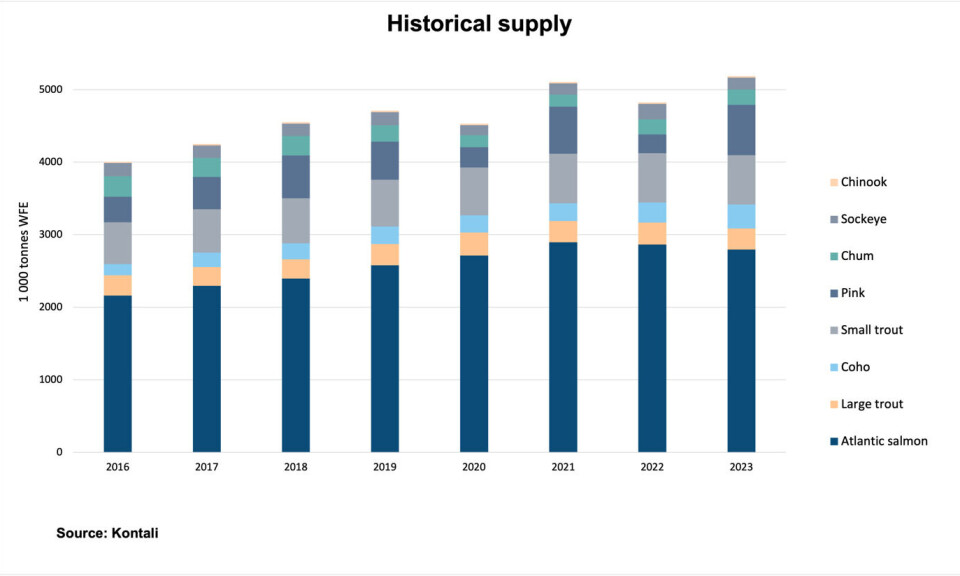
Wild catch lifted salmonid supply by 7% last year
Driven by a robust wild catch season, the total supply of salmonids, including small trout, increased by 7% year-over-year (YoY) to 5.2 million tonnes in 2023, according to business analyst Kontali.
The total supply wild-caught salmonid species amounted to 1.09 million tonnes, a 57% increase YoY, although prices fell whether species were abundant or not. The average prices for Alaskan sockeye, for example, dropped by 49% YoY despite a 22% decrease in catch volume.
The increase in the wild catch segment was primarily driven by pink salmon, which reached 690,000 tonnes, up 169% YoY. In contrast, farmed salmonid supply remained relatively stable, with a slight decrease of 0.8% YoY.
15% for Mowi
Kontali's research indicates that the top 15 salmon farming companies accounted for 66% of global salmon farming harvest volumes in 2023. Mowi maintained its position as the largest player, holding a 15% share of total farmed salmonid volumes, unchanged from 2022.
In the Atlantic salmon sector, harvest volumes decreased for the second consecutive year, dropping by 2% YoY to 2.79 million tonnes in 2023.
Norway, the largest producer, saw a 2.5% decline to 1.48 million tonnes. In contrast, Chile increased its production by 2% to 760,000 tonnes. Canada experienced the largest production decline, down 17% YoY, whereas Russia recorded a 9% increase.
Atlantic salmon stalls
Atlantic salmon exports to the United States market stagnated in 2023 after seven years of continuous growth. In the largest market for Atlantic salmon, the EU + UK market, supply decreased by nearly 5% YoY to 1.2 million tonnes. The Japanese market continued to decline, down 19% YoY, while the Russian market - supplied with farmed fish by Chile - recovered from a close to historic low level.
Global production of large trout decreased by 6% YoY to 289,800 tonnes, with Chile experiencing a significant 28% decline. However, farmed coho salmonid production globally surged by 18% YoY to 309,000 tonnes, driven by a substantial increase in Chile.
“The challenges in 2023 are hanging over the industry and impacting 2024. Despite efforts to address these issues, 2024 began with low biomass, and the limited growth from 2023 further reduces harvest potential this year. While land-based production has shown promise, it is still in its early stages and hasn't significantly impacted global salmon production,” said Filip Szczesny, senior analyst at Kontali.























































